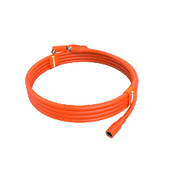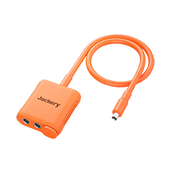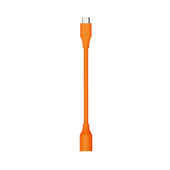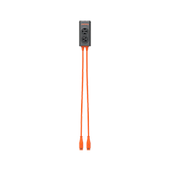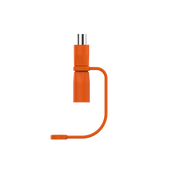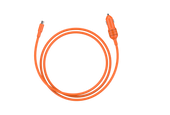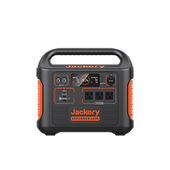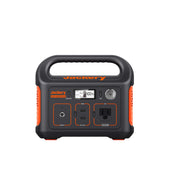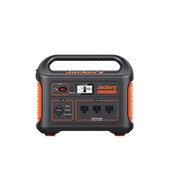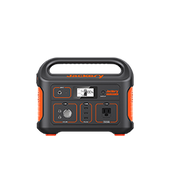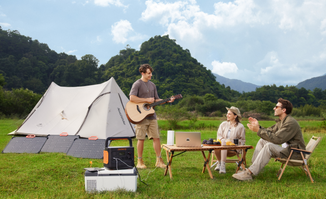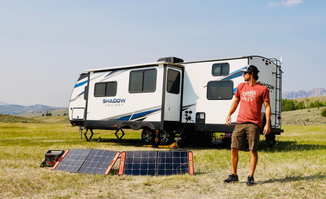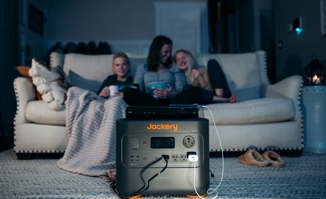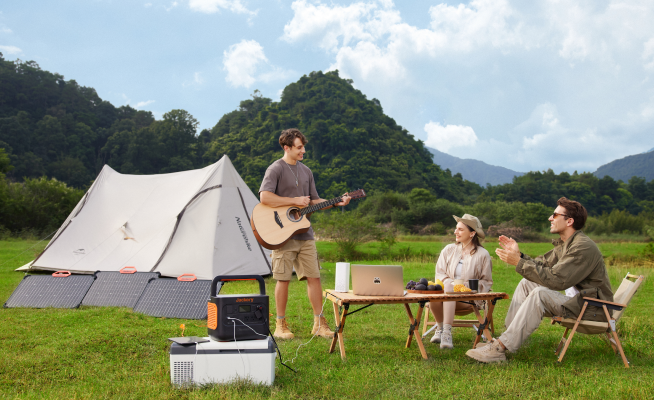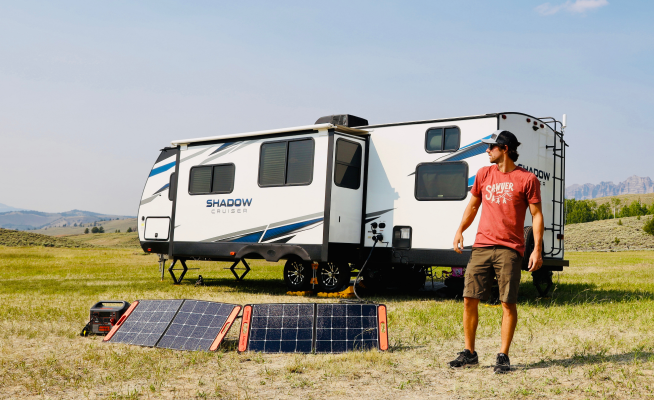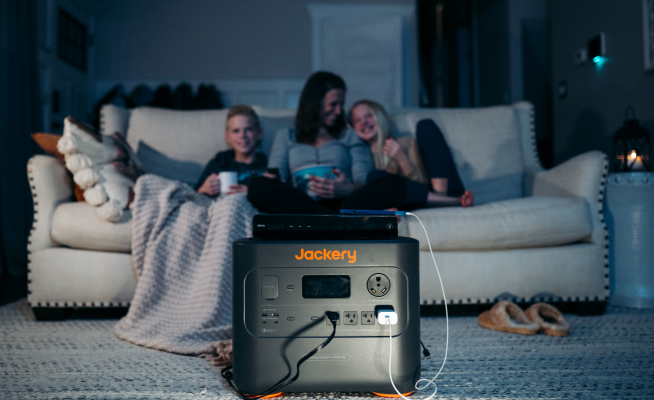Solar Powered Dryer: Can Solar Generator Power A Dryer
The solar-powered dryer is environmentally friendly and could save users money on their energy costs. It is an alternative to the conventional wall-charged electric dryer.
On average, dryers consume between 1,500 and 5,000 Watts of electricity; however, this range primarily depends on the type. Using a dryer three times per week will consume around 468 kilowatt-hours of electricity annually.

This page explains what a solar-powered dryer is, how it operates, and a solar-powered dryer vs. a solar generator for a dryer. According to the comparison, we suggest Jackery solar generators for quickly powering your clothes dryer.
What is Solar Powered Dryer
One strategy to lower one's carbon footprint and "go green" is reducing household electricity consumption. Electric clothes dryers take up to 4 kilowatts of energy, making them one of the most energy-intensive household appliances.
The solar-powered dryers can help you save electricity and lower your carbon footprint. For some time now, solar-powered products have made our lives more convenient. Whether you're looking to save money on your electricity bill or like living off the grid in style, these inventions have you covered.
How Does A Solar-Powered Dryer Work
Some dryers can be powered by solar energy. They consume less energy and have shorter spin cycles than standard dryers. You will be able to launder your garments without significantly hurting the environment.
Although dryers are more challenging to power, it is still doable. The dryer you select should not have a considerable heating element. One that uses air would be much more compatible with solar energy. If a room is restricted, you can search for a washer-dryer combo. Typically, they consist of a twin tub with a washer on one side and a dryer on the other, but you can also get them in a single tub.

How Many Watts Does A Dryer Use
Compared to most household appliances, your dryer likely consumes a lot of electricity. This holds for most heat-generating appliances, such as your boiler, water heater, and oven. Depending on the model, a clothes dryer requires an average of 1,500 and 5,000 Watts of power. Most clothes dryers require between 7.5 and 30 Amps and a 240V outlet.
The frequency with which you use your dryer has the most significant impact on the amount of electricity it consumes over time, and homes have a variety of laundry patterns. Operating a 3,000 W clothes dryer once weekly will consume 3 kWh per week, 13 kWh per month, and 156 kWh per year.
How Much Does It Cost to Power A Dryer
Based on an average wattage of 3,000 W for clothes dryers (equivalent to 468 kWh/year if used three times per week) and state-average energy rates, the monthly and annual costs of operating a clothes dryer are outlined below. On average, dryer operation costs $5.5 per month and $66.4 per year.
|
Location |
Electricity Rate |
Cost Per Month |
Cost Per Year |
|
US Average |
14.2 ₵/kWh |
$5.5 |
$66.4 |
|
California |
22.0 ₵/kWh |
$8.6 |
$102.9 |
|
New York |
20.6 ₵/kWh |
$8.0 |
$96.3 |
|
Texas |
12.6 ₵/kWh |
$4.9 |
$58.8 |
|
Florida |
12.2 ₵/kWh |
$4.8 |
$57.1 |
|
New Jersey |
16.2 ₵/kWh |
$6.3 |
$75.8 |
|
Washington |
10.4 ₵/kWh |
$4.0 |
$48.6 |
How Much Solar Power Does A Dryer Need
Electricity is used to power a motor that revolves around the drum and a fan that blows hot air in all dryers. Some contemporary models may consume a small amount of energy for digital displays and control panels. Yet, most of a dryer's power is used to produce heat.
|
Dryers |
Watts |
Length of Use |
Solar Power Needed |
|
Average |
1500W-5000W |
2H / Week |
3kWh-10kWh |
|
Small Size |
1500W-2500W |
2H / Week |
3kWh-5kWh |
|
Medium Size |
3000W-4000W |
2H / Week |
6kWh-8kWh |
|
Large Size |
4000W-5000W |
2H / Week |
8kWh-10kWh |
Jackery Solar Generators for Dryer
Consequently, when utilizing a solar-powered dryer, numerous obstacles exist. In addition to the expense of the washer and dryer, you must also install solar panels. This may increase your cost further, but you will recoup your investment over time. However, investing in a solar-powered dryer incurs additional fees and maintenance. In contrast, solar generators have the same efficiency as solar panels but cost half or even less.
Many are the advantages of solar generators, which may power not only your dryer but also the majority of your home appliances:
- Solar generators produce clean, renewable energy that does not negatively impact the environment; solar energy is limitless and free.
- Due to its portability, a solar generator may be taken anywhere, including the home, an off-grid location, or a campsite.
- Solar generators have no moving parts, which reduces the likelihood of incurring repair costs.
- Solar generators are simple to operate because they do not require fuelling, lubrication, starting, or maintenance. Switch it on, plug in your gadgets, and take power from it.

Jackery enables to use of solar energy with ease. Jackery is now a global energy leader, the number one producer of portable electricity, and one of the world's largest manufacturers of outdoor solar utilities. Jackery solar generators come in various capacities and sizes to meet indoor and outdoor power demands.
On average, a clothes dryer consumes between 1,500 and 5,000 Watts; therefore, only high-capacity solar generators can meet this demand. With a capacity of 3024Wh, the Solar Generator 3000 Pro can easily power a dryer and other appliances. A complete recharge requires 2.4 hours of wall charging and 3 - 4 hours of solar charging.
In addition, Solar Generator 2000 Pro is an excellent choice for charging dryers and other high-wattage appliances. As a result of its 2160Wh capacity and 4400W peak power, it can power 96% of all devices. Solar Generator 1500 Pro has 3* 1800W AC charging connections, 2* USB-C charging ports, and one car charger, enabling rapid charging of all conceivable household electronics and gadgets.
|
Series |
Capacity |
Ports |
Dryer Watts |
Working Hours |
|
Jackery Solar Generator 3000 Pro |
3024Wh |
4*AC Output: 120V, 60Hz, 3000W Max (6000W Peak) 2*USB-A Output: Quick Charge 3.0, 18W Max 2*USB-C Output: 100W Max, (5V, 9V, 12V, 15V, 20V up to 5A) Car Port: 12V, 10A AC Input: 120V, 60Hz, 15A Max 2*DC Input: 11V-17.5V, 8A Max, Double to 8A Max 17.5V-60V, 12A, Double to 24A/1400W Max |
Average: 1500W-5000W Small Size: 1500W-2500W Medium Size: 3000W-4000W Large Size: 4000W-5000W |
Average: 1.7H-31Mins Small Size: 1.7H-1H Medium Size: 51.4-38.6Mins Large Size: 38.6-31Mins |
|
Jackery Solar Generator 2000 Pro |
2160Wh |
AC Output: 120V, 60Hz, 2200W (4400W Peak) USB-A Output: Quick Charge 3.0, 18W Max USB-C Output: 100W Max, (5V, 9V, 12V, 15V, 20V up to 5A) Car Output: 12V, 10A |
Average: 1500W-5000W Small Size: 1500W-2500W Medium Size: 3000W-4000W Large Size: 4000W-5000W |
Average: 1.2H-22Mins Small Size: 1.2H-44Mins Medium Size: 36.7-27.5Mins Large Size: 27.5-22Mins |
|
Jackery Solar Generator 1500 Pro |
1534Wh |
AC Output: 110V, 60Hz, 1800W (3600W Peak) USB-A Output: 5V, 2.4A Quick Charge 3.0, 18W Max, 5-6.5V, 3A/6.5-9V, 3A / 9-12V USB-C Output: PD60W, (5V, 9V, 12V, 15V, 20V up to 3A) Car Output: 12V, 10A |
Average: 1500W-5000W Small Size: 1500W-2500W Medium Size: 3000W-4000W Large Size: 4000W-5000W |
Average: 52.2-15.6Mins Small Size: 52.2-31.3Mins Medium Size: 26.1-20Mins Large Size: 20-15.6Mins |
Solar Powered Dryer VS. Solar Generator for Dryer
A clothes dryer, often known as a tumble dryer or just a dryer, is a motorized household appliance that evaporates moisture from a load of washed clothing, bedding, and other textiles.
The most environmentally beneficial way to dry clothing is to hang them outside, a natural solar and wind-powered approach that has been used for generations, but most people cannot do so due to where they live. For instance, those who reside in flats typically lack access to an outside space or even a window that receives sunshine.
It is possible to operate a solar-powered dryer, but it is vital to properly size the solar system and determine how many solar panels are required. Sometimes, solar panels can generate enough energy to power a dryer for free.
Most people are becoming increasingly aware of the significance of solar panels and the solar power system as the trend toward harnessing and utilizing solar energy gains momentum. The solar-powered dryers accelerate the drying of your clothing while using solar energy through an upgraded heating system.
To use a solar-powered dryer, you must install a solar panel system in your home, which may be more expensive than an electric dryer. In addition, you must contact professionals for solar panel installation and maintenance. As a result, it is better to use a portable solar generator to power your dryer with renewable energy.
|
Types |
Features |
Pros |
Cons |
|
Solar Powered Dryer |
- Need solar panel system at home - Suitable for going off the grid - Need power consumption calculation |
- Clean - Going off the grid - Less carbon dioxide emission - Free to use once installed - Not merely power the dryer |
- Need professional installation - Work not better on cloudy or rainy days - Highly dependent on location and weather - Expensive - Need post-maintenance - Need a backup plan |
|
Solar Generator for Dryer |
- Equipped with solar panels and a power station - Unlimited energy - Portability - No need to install or relative maintenance
|
- Easy to setup - No installation - No maintenance - Clean - Quiet when using - Work on cloudy or rainy days - Not only power a dryer but most of your appliances |
- Some solar generators with large capacities may cost a little (but lower than solar panels for dryers) |
Solar Powered Dryer
A solar-powered dryer will solve the issue of high energy usage, allowing you to save money on your electricity bill and protect the environment by lowering your carbon footprint.
Before deciding to power your electric dryer with solar energy, evaluating several factors, such as your budget, energy consumption rate, and intended use, is advisable. Installation of solar panels can grow rather pricey. Hence, it would help to evaluate how frequently you intend to use your dryer, as the more you use it, the more panels you need to install. A more extensive solar energy system will be more efficient.
You must ensure that your electric dryer is compatible with your solar panels to avoid damaging your dryer while attempting to save money. In addition, the price must match the performance you anticipate from your dryer.
The cost of running a dryer on solar energy depends on factors, including the size of your dryer and the amount of sunlight that reaches your solar panels daily. But, you must realize that the sun does not shine daily and consider an alternative power source during rainy seasons.
Solar Generator for Dryer
There are numerous factors to consider while selecting a solar-powered dryer. First, you must ensure the dryer is compatible with your solar panel system, necessitating numerous preparations for solar-powered dryer charging.
Second, you must choose between a portable and permanently mounted dryer. Portable solar dryers are ideal for individuals with limited space, although they are less efficient than always-placed dryers.

Thirdly, you must pick how much energy you want the dryer to use. Larger wattage dryers will consume more electricity and may not be compatible with smaller solar panel systems, but they will dry clothing more quickly.
Next, you should evaluate the dryer's price. Solar-powered dryers can be pricey, so you'll need to ensure you're receiving the features and performance you like at a price you're ready to spend. However, choosing a portable solar generator eliminates these concerns, as it does not require professional installation, is easy to transport, and is capable of powering higher-wattage appliances. Installing a solar generator is less expensive than establishing a solar panel system.
Jackery, the leading solar brand, produces high-quality solar products and supports using clean energy to save the globe. The Jackery SolarSaga solar panels are connected to the Explorer power station to convert solar energy into electricity using solar charging cables. The power station supports multiple outlets and ports to power multiple devices simultaneously. Solar generators must be your primary source of home power.

A clothes dryer can consume higher wattage than most of your home appliances. Thus, a high-capacity solar generator is needed to offer stable and robust energy. For instance, Jackery Solar Generator 3000 Pro, with over 3024Wh capacity, can charge around 99% of home appliances, including a dryer, TV, refrigerator, and more.
Solar Powered Dryer FAQs
The following shows the frequently asked questions about the solar-powered dryer:
1. What size of solar generator do I need to power a dryer?
Considering what size solar generator to power a dryer, it is essential to determine the wattage of a dryer and choose the solar generator accordingly. Typically, a dryer uses between 1500 to 5000 Watts. Hence, here need a high-capacity solar generator with at least 1500Wh capacity.
Here is the calculation to calculate how long the Jackery solar generator will charge your dryer:
Working time = solar generator capacity*0.85 / operating wattage of your dryer
If you use the Jackery Solar Generator 3000 Pro (3024Wh capacity) to charge your dryer (1500W), the working time is 1.7H (3024Wh*0.85/1500W).
2. Can a solar panel power a dryer?
No, you should not directly power a dryer with solar panels. A solar panel may be unable to manage a clothes dryer's power consumption, which could harm the panel. You should instead connect your solar panels to an inverter, which will transform the DC power from the panels into AC power that the dryer can use. The inverter must be appropriately sized for the solar panel array and the clothes dryer. Consequently, choosing a solar generator for dryers looks more rational and cost-effective.
3. Does the solar-powered dryer function the same as the traditional dryer?
Solar-powered dryers perform as effectively as conventional dryers because they rely only on solar-generated electricity. Because of the initial expense of solar panel installation, solar-powered dryers may be more expensive than traditional dryers. If you already have solar panels installed, solar-powered clothes drier is an excellent option.
Final Thoughts
A solar-powered dryer is environmentally friendly. If you want to reduce your electricity costs, operating your dryer on solar energy could be a wise option. Nevertheless, you must first install solar panels. Using Jackery solar generators to power a dryer offers several advantages, including being clean, quiet, and simple to set up, especially when compared to solar panels for a dryer.
Disclaimer:
The runtime mentioned for appliances powered by Jackery is for reference only. Actual runtime may vary under different conditions. Please refer to real-world performance for accurate results.






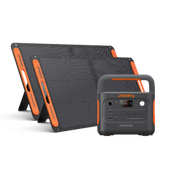


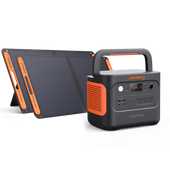

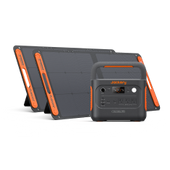
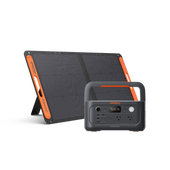
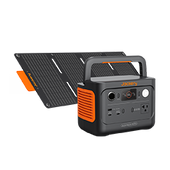
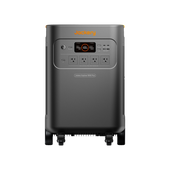
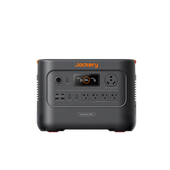
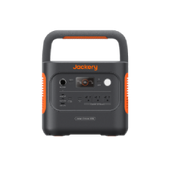
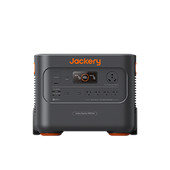
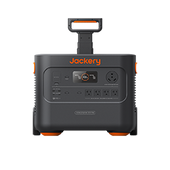

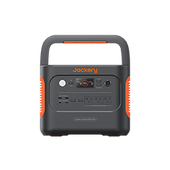
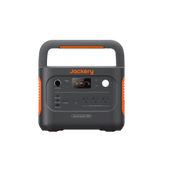
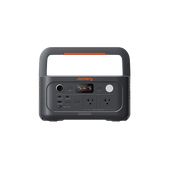

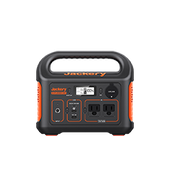
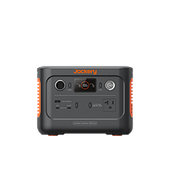
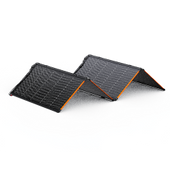
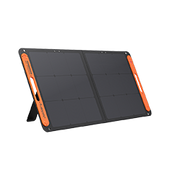

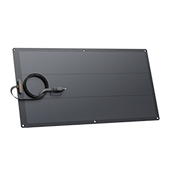
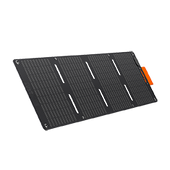
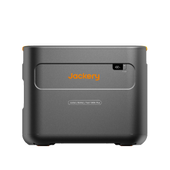
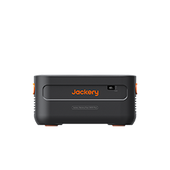
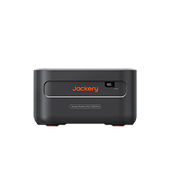
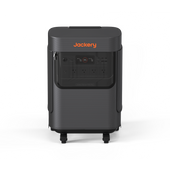
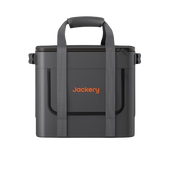
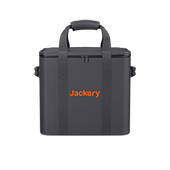
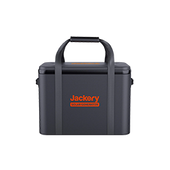
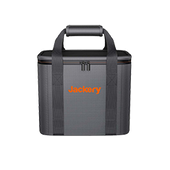
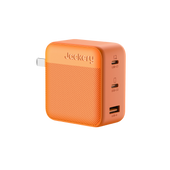
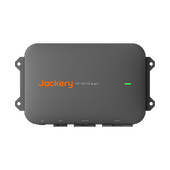
![[Add-on] Jackery Manual Transfer Switch for Explorer 5000 Plus](http://ca.jackery.com/cdn/shop/files/add-on-jackery-manual-transfer-switch-for-5000-plus-240V.webp?v=1757043692&width=170)
